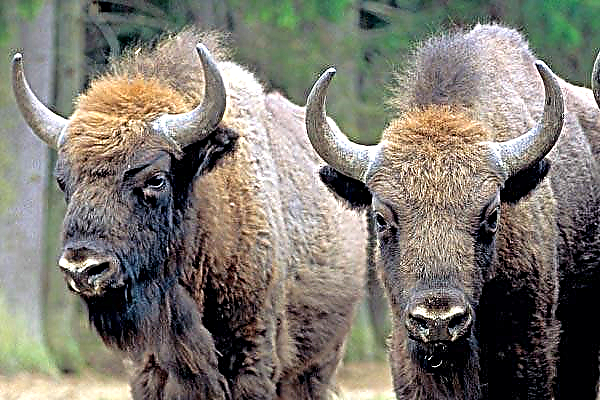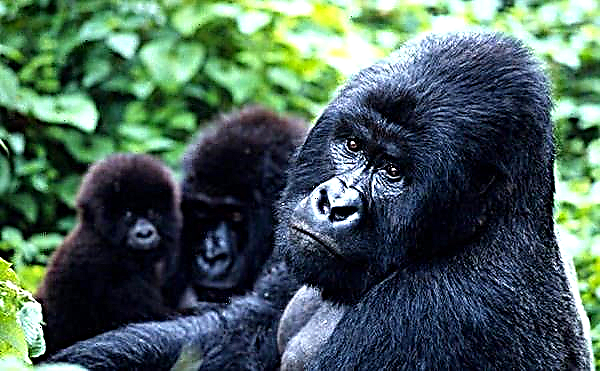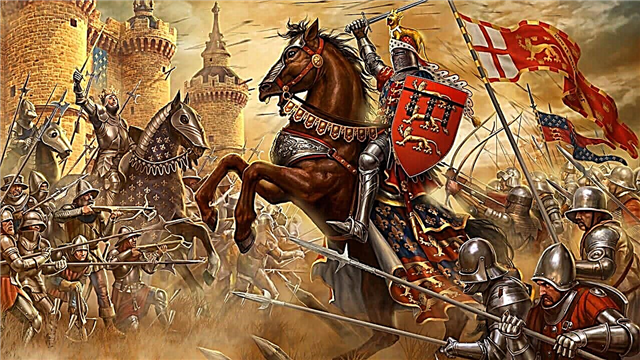Specialists from the famous WWF claim that over the past quarter century, the biological diversity of our planet has declined by about a third. Every year, dozens of plant and animal species fall into the lists of forever lost.
The current Top 10 entered the rarest animals on earth. There are few of them left, but still these species can still be saved if you make maximum efforts.
10. Bison
 This is the largest and heaviest of mammals in Europe. The bison is the last representative of European wild bulls. Today their number does not exceed 3000 individuals, and about a hundred live in captivity. Bison used to inhabit the zone of broad-leaved and mixed forests of the Caucasus, Northern Iran, Central, Western and Southeast Europe.
This is the largest and heaviest of mammals in Europe. The bison is the last representative of European wild bulls. Today their number does not exceed 3000 individuals, and about a hundred live in captivity. Bison used to inhabit the zone of broad-leaved and mixed forests of the Caucasus, Northern Iran, Central, Western and Southeast Europe.
9. Helmeted cassowary
 This large flightless bird has a very expressive appearance. Individual individuals weigh about 80 kg and reach 1.5 meters in length. Basically, cassowaries live in northeast Australia and in the tropical forests of New Guinea. Currently, the population of helmet-bearing cassowaries is 1,500 individuals.
This large flightless bird has a very expressive appearance. Individual individuals weigh about 80 kg and reach 1.5 meters in length. Basically, cassowaries live in northeast Australia and in the tropical forests of New Guinea. Currently, the population of helmet-bearing cassowaries is 1,500 individuals.
8. Gavial
 One of the slowest animals of bizarre and rare crocodiles in the world by 1970 was considered almost completely extinct. However, thanks to a program developed in India for the artificial breeding of crocodiles, the gavial population was increased to 1,500 individuals. Despite this, even today reptiles die, entangled in fishing nets, their eggs are in demand on the black market, and males are exterminated due to growths on the nose, considering them aphrodisiacs.
One of the slowest animals of bizarre and rare crocodiles in the world by 1970 was considered almost completely extinct. However, thanks to a program developed in India for the artificial breeding of crocodiles, the gavial population was increased to 1,500 individuals. Despite this, even today reptiles die, entangled in fishing nets, their eggs are in demand on the black market, and males are exterminated due to growths on the nose, considering them aphrodisiacs.
7. Big panda
 The handsome, depicted on the emblem of the World Wide Fund for Nature, is known throughout the world. However, this does not help her avoid a slow extinction. Once a panda lived throughout South Asia, today it can only be found on the outskirts of the Tibetan plateau. The total number of species is about 1200 individuals.
The handsome, depicted on the emblem of the World Wide Fund for Nature, is known throughout the world. However, this does not help her avoid a slow extinction. Once a panda lived throughout South Asia, today it can only be found on the outskirts of the Tibetan plateau. The total number of species is about 1200 individuals.
6. Snow Leopard
 This rare predator once lived in the mountains of Central Asia. Outwardly, it resembles a white leopard, but smaller and has a long fluffy tail. Snow leopard is quite difficult to meet in the wild. At present, the number of species does not exceed 2000 individuals and continues to decline.
This rare predator once lived in the mountains of Central Asia. Outwardly, it resembles a white leopard, but smaller and has a long fluffy tail. Snow leopard is quite difficult to meet in the wild. At present, the number of species does not exceed 2000 individuals and continues to decline.
5. Horses of Przhevalsky
 They were the last wild horses that inhabited the plains of Asia. The reason for the extinction of these animals was the Mongol tribes, which hunted them because of the delicious meat. Today in the world there are no more than 1000 individuals that are kept in captivity. People never managed to tame Przhevalsky’s horse, because she is naturally not amenable to training.
They were the last wild horses that inhabited the plains of Asia. The reason for the extinction of these animals was the Mongol tribes, which hunted them because of the delicious meat. Today in the world there are no more than 1000 individuals that are kept in captivity. People never managed to tame Przhevalsky’s horse, because she is naturally not amenable to training.
4. Mountain gorillas
 Large primates live in the dense forests of the Republic of Congo, in southwestern Uganda and in Rwanda. Despite its considerable size and formidable appearance, it is a very peaceful and sociable animal. However, natural disasters, predatory destruction by poachers, human-transmitted diseases and the destruction of the natural habitat have led to a reduction in the number of these monkeys to 720 individuals.
Large primates live in the dense forests of the Republic of Congo, in southwestern Uganda and in Rwanda. Despite its considerable size and formidable appearance, it is a very peaceful and sociable animal. However, natural disasters, predatory destruction by poachers, human-transmitted diseases and the destruction of the natural habitat have led to a reduction in the number of these monkeys to 720 individuals.
3. Amur tiger
 One of the rarest representatives of the world fauna is listed in the Red Book in connection with the fact that it is under the threat of complete extinction. The northernmost species of tiger lives in southeastern Russia. The intensive extermination of these predators and the reduction of habitats due to human activities led to the fact that by the end of the 1930s there were only 50 of them left. To date, the number of Amur tigers ranges from 4 hundred individuals.
One of the rarest representatives of the world fauna is listed in the Red Book in connection with the fact that it is under the threat of complete extinction. The northernmost species of tiger lives in southeastern Russia. The intensive extermination of these predators and the reduction of habitats due to human activities led to the fact that by the end of the 1930s there were only 50 of them left. To date, the number of Amur tigers ranges from 4 hundred individuals.
2. Javanese rhino
 Javanese is the most mysterious of all rhinos. Previously, this one-horned animal could be found in Southeast Asia, as well as on the Great Sunda Islands. Today, the Javanese rhino lives only in Indonesia and on the island of Java. There is no such animal in any zoo in the world, and today no more than 25-30 rhinos live in the wild.
Javanese is the most mysterious of all rhinos. Previously, this one-horned animal could be found in Southeast Asia, as well as on the Great Sunda Islands. Today, the Javanese rhino lives only in Indonesia and on the island of Java. There is no such animal in any zoo in the world, and today no more than 25-30 rhinos live in the wild.
1. Chinese river dolphin
 This aquatic mammal has been distributed in eastern China. River dolphins do not have natural enemies, but human activities, pollution of the Yangtze River, the construction of dams and drainage of the land have led to the number of animals reduced to 30 individuals. Alas, representatives of this rare species hardly survive in captivity.
This aquatic mammal has been distributed in eastern China. River dolphins do not have natural enemies, but human activities, pollution of the Yangtze River, the construction of dams and drainage of the land have led to the number of animals reduced to 30 individuals. Alas, representatives of this rare species hardly survive in captivity.
Protect the environment!












